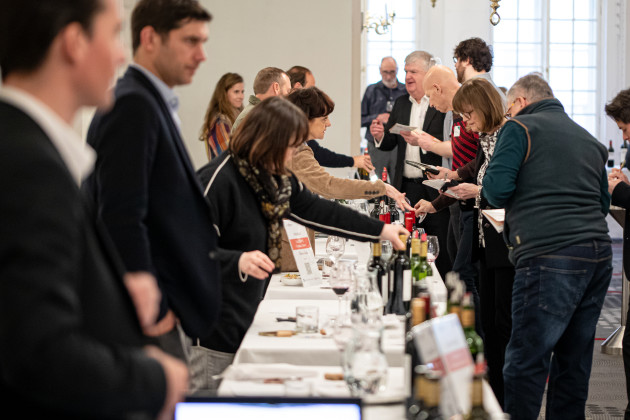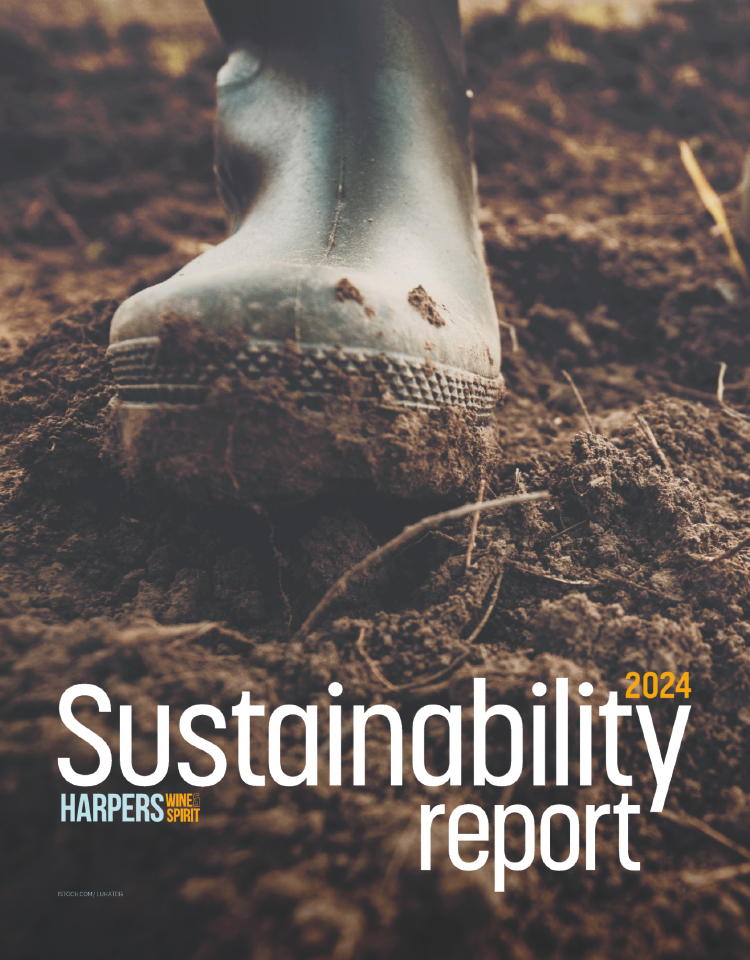
Long Read: Grand Cercle boss on the steps to save Bordeaux
The ‘future’ of Bordeaux was on show in London last week at the Grand Cercle des Vins de Bordeaux, as the region continues to weather the storms of climate change and downward pricing pressures.
The future is “very important this year”, the organisation’s founder and president Alain Raynaud told Harpers after the event, which offered a sneak peek of the 2023 vintage alongside a retrospective of vintages spanning the past ten years.
Downy mildew severely affected much of the region’s production in 2023, making quality “very difficult to produce”.
Bordeaux is also struggling with its long-term price performance, where it continues to lag behind other regions. According to Part I of Wine Lister’s annual Bordeaux Study, the region is ‘on the verge of cardiac arrest’. Its average market prices have dropped by 8% over the past 12 months. Prices are stagnating in the secondary market too, while négociants are creaking under the weight of back vintage stock.
Raynaud addressed the situation, telling Harpers that Bordeaux has to “make a revolution. If we stay at the same price, we will have no market”.
Despite these challenges, the trade descended with enthusiasm at last Tuesday's (9 April) event, where the wines showed an increased push towards a modern consumer preference for elegance over power.
The Grand Cercle des Vins de Bordeaux (Grand Circle of Bordeaux Wines) is comprised of 124 châteaux from both the Right and Left Bank, spanning 27 appellations.
The idea for the group and its activities stemmed from Raynaud’s time as the president of the Union des Grand Crus de Bordeaux, where he noticed a missed opportunity for “representation of châteaux on both sides of the river”.
Attendees on Tuesday were invited to sample the likes of Château Maillet from Pomerol, Château Lanessan (Haut-Médoc) or Château Fonroque (Saint-Émilion Grand Cru Classé), all of which showed wines from a prior vintage alongside the most recent one.
The Wine Lister study also showed that Bordeaux has been impacted by socio-economic instability over the past four years, which has cut the spending power of the buyers who once drove demand for the world’s premium fine wines. Coinciding with this phenomenon is the fact that en primeur release prices of Bordeaux’s top wines have increased to unprecedented heights, up by an average of 20% for the 2022 vintage. Combined with low trade margins however, merchants complain they are not incentivised to focus on Bordeaux en primeur.
Online, Bordeaux is growing in popularity. But participants in the survey part of the Wine Lister study still overwhelming felt that only a significant pricing reset can renew consumer confidence and interest in buying Bordeaux futures.
Bordeaux also finds itself in the throes of a mass vine-removal movement. Extreme weather, overproduction and reduced red wine consumption at home and abroad have prompted wineries to diversify their offer in recent years. In 2023, the French government agreed to support this, offering funding to the tune of €200 million (£171 million) for thousands of hectares to be uprooted.
A total of €57 million has been allocated to Bordeaux to clear 9,500ha of vines, which are due to be pulled up by June this year. Meanwhile, those that do uproot are barred from re-planting vines for another 20 years.
“It’s very sad when you travel and see the vines destroyed, you realise we’re in a strange situation,” Arnaud concluded.
His mission statement however, remains the same: “We have striven to build recognition for our talented chateaux since 2013. We are driven by a sense of strong values that keeps us together and continuously active in seeking ways to capitalise on our collective energy. We focus steadfastly on a single ambition: to make excellence affordable.”
When it comes to the vineyard, there is clearly much to be done. The 2024 vintage is currently requiring a great deal of preventive attention to eradicate fungal problems, though Raynaud and his team remain as optimistic as they can in the face of difficulties.
Following on from phytosanitary recommendations, the quality of the 2023 has been confirmed, they said, and – despite fears – will be “a very fine vintage”.








